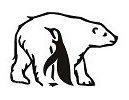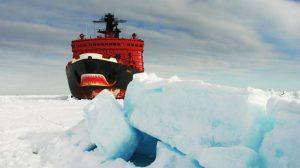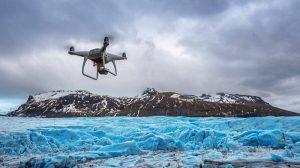
A bear with two cubs
The difficulties of survival
Environmental degradation and climate change lead to an annual decrease in biological diversity on our planet. A study published in the journal Nature Climate Change says that, by 2100, the population of polar bears in the Arctic may irretrievably disappear.
Special reserves have been created to preserve Arctic predators, where scientists monitor the state of the population. Thanks to regular monitoring, the Wrangel Island Nature Reserve, popularly called Polar Bear Island, boasts a large number of these animals. Every year, hundreds of female bears breed and raise their offspring here.
Previously, the owners of the Wrangel Island Nature Reserve used infrared cameras to control bears. But they did not always cope with the task and often overlooked the animals. To solve this problem, the reserve began using unmanned aerial vehicles and now the animals are always under close supervision. Anton Larsen, Director of Industrial Solutions at Skymec, spoke about how drones are fighting the extinction of polar bears.
Bears are counted in the spring

A cluster of polar bears
The main factor influencing the number of polar bears is the availability and accessibility of food. For their main dish – seals, bears hunt from glaciers. This is possible thanks to the white skin, which helps them disguise themselves. Due to climate change, glaciers are melting, forming huge expanses of water, which greatly complicates the life of polar bears. Since it is impossible to sneak up unnoticed, and it is inconvenient to hunt afloat, they are forced to starve.
In addition, poachers affect the decrease in their numbers. The law prohibiting bear hunting in the Russian Arctic has been in force since 1956, but unscrupulous hunters constantly come up with loopholes and cunning moves. According to WWF, most cases of poaching have been recorded in Chukotka. Moreover, the Chukchi shoot bears only for the purpose of food, and not for their skins, as they do in the west of the Arctic.
Also, the population of polar bears is negatively affected by the destruction of their natural habitat by harmful substances – toxins, pesticides, oil, etc. Poisoned animals most often die, bears do not give offspring, or cubs are born weak and sick.
But if a bear can still survive poisoning, then its prey (fish and seals) cannot. A polar bear left without food often goes to human settlements, which leads to tragic consequences.
Employees of the reserve most actively observe polar bears in March-April, when the bears teach the cubs to hunt and survive independently in environmental conditions.
However, accounting for polar bears requires considerable investments. According to WWF, it takes about $10-15 million to collect data on a single population in the Russian Arctic. At the same time, it is necessary to take care of the polar bears themselves. Close attention to them from a person can disrupt their usual way of life.
Drones: how does it work?

Industrial drone
The most effective and safe way for animals to monitor is to take pictures from drones. However, in the case of the harsh Arctic climate, conventional consumer drones are not enough – they cannot withstand operation on snow-covered objects at temperatures of -50 °. The best option for such conditions is an industrial drone.
The use of UAVs saved scientists from working in extreme conditions – previously, workers independently traveled around the sites on snowmobiles and surveyed the area. In the spring of 2020, Wrangel Island employees observed polar bears for the first time using drones equipped with thermal imagers and cameras with 30x zoom.
Since the sensors on the quadcopter were configured for a certain temperature range, now scientists can easily detect bear dens even under the thickness of Arctic snow. The location of the bears was recorded using GPS coordinates, so that in the future the drone could automatically transmit video to the headquarters.
All employees of the reserve liked the experience of watching from a quadcopter. The researchers noted that the device significantly accelerated the process of monitoring along the specified routes. And also with the help of shooting with multiple magnification, for the first time it was possible to see a female and two cubs right in their den.
The materials obtained during the monitoring are unique photo and video content that will allow for an annual comparative analysis of the state of the population of northern animals. Also, aerial surveillance will allow timely detection and prevention of threats to the life and health of polar bears. This measure to protect their population will help prevent the mistakes of previous years and restore the number of Arctic kings.
By Andrey Saveliev


